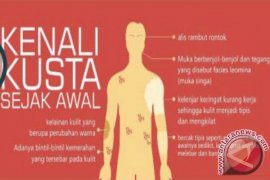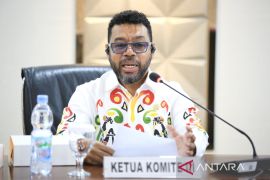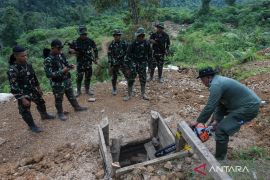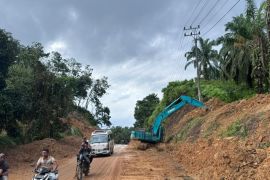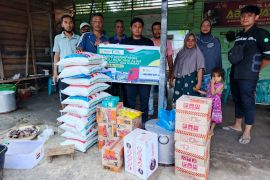Cases of leprosy continue to surface in some areas and people who were afflicted with the disease but have been cured continue to face the stigma and discrimination. Health workers encounter difficulties in reaching out to people living with leprosy to offer treatment.
Although Indonesia has managed to reach a stage close to eliminating leprosy, the country has not been able to completely eradicate the disease.
In some areas, such as Banten, West Kalimantan, South Kalimantan, East Java, leprosy remains prevalent.
Tangerang District Health apparatuses in Banten province recently conducted a leprosy census and found that as many as 397 patients with leprosy were in need of serious attention.
According to Tangerang Health Office Chief Naniek Isnaeni, of all the districts and cities in Banten province, the number of people with leprosy in Tangerang district was the highest and it was endemic in 29 sub-districts.
Isnaeni remarked that in the last two years, the number of lepers in Tangerang district continued to rise and until early this year, it had reached 397.
In Lebak district, local health office recently discovered 60 new patients of leprosy who are now under serious treatment.
Lebak District Health Office Head for Infectious Disease Dr Firman Rahmatullah said leprosy cases are prevalent in the sub-districts of Rangkasbitung, Cibadak, Cimarga, Kalanganyar, Maja, Warunggunung and Sajira.
Therefore, the local government has set itself a target to make Lebak district free from leprosy by 2020.
In West Kalimantan province, the Kubu Raya District Health Office is now making every effort to address leprosy cases in four sub-districts.
"Cases of leprosy are still found in the sub-districts of Rasau Jaya, Sungai Raya, Sungai Kakap, and Sungai Ambawang, but with our efforts, the number of patients suffering from the disease continues to decrease every year," local Health Office Chief, Berli Hamdani, remarked in Sumgai Raya, West Kalimantan on Tuesday.
Hamdani affirmed that effective and integrated leprosy control measures have been implemented to improve healthcare through examination, early detection, treatment, and care.
"Through integrated and comprehensive control and education, the number of new cases this year is expected to come down," he emphasized.
According to Hamdani, the local health office will, on an ongoing basis, deploy health workers to continue disseminating information regarding the disease directly to people in the field.
"In general, today, the level of public awareness for participating in leprosy prevention efforts is high. At least many people are aware of the symptoms of leprosy. If they immediately contact the nearest health workers, the cases can be quickly addressed," he added.
Also, in February this year, it was reported in South Kalimantan that cases of leprosy had continued to increase in the district of Balangan.
With the discovery of 14 new cases last year, the total count of leprosy patients undergoing treatment in the district had reached 25.
Leprosy is a complex infectious disease and is connected not only to medical aspects but also extends to social issues, culture, security, and social resilience.
The publics knowledge and understanding of leprosy is still low, coupled with the erroneous belief against the disease and disabilities it causes.
East Java is a province with relatively more number of leprosy patients as compared to other provinces in Indonesia.
Leprosy remains a largely neglected disease, especially in the rural areas of the country, where little is known about it, and many suffer from the stigma and lack of knowledge surrounding the disease.
East Java provincial Health Office Chief Dr Harsono remarked in Surabaya that the local government would continue to take steps to reduce the number of leprosy patients and hoped that the figure will come down to less than one patient per 10 thousand population.
Leprosy has been around since the beginning of time, often surrounded by terrifying, negative stigma and tales of leprosy patients being shunned as outcasts.
But it is actually not highly contagious because its incubation period is more than 20 years.
A person can catch the disease only if he or she comes into close and repeated contact with nose and mouth droplets from untreated lepers.
The main symptom of leprosy is disfiguring skin sores, lumps or bumps that do not go away after several weeks or months with the skin sores turning pale.
But without treatment, the disease can lead to permanent nerve damage and muscle paralysis.
Therefore, in future, the Indonesian Ministry of Health will step up preventive action to address the leprosy cases in the country as the disease is now preventable and treatable through a very simple way of clean and healthy behavior.(*)
Reporter: Otniel Tamindael
Editor: Heru Purwanto
Copyright © ANTARA 2016
